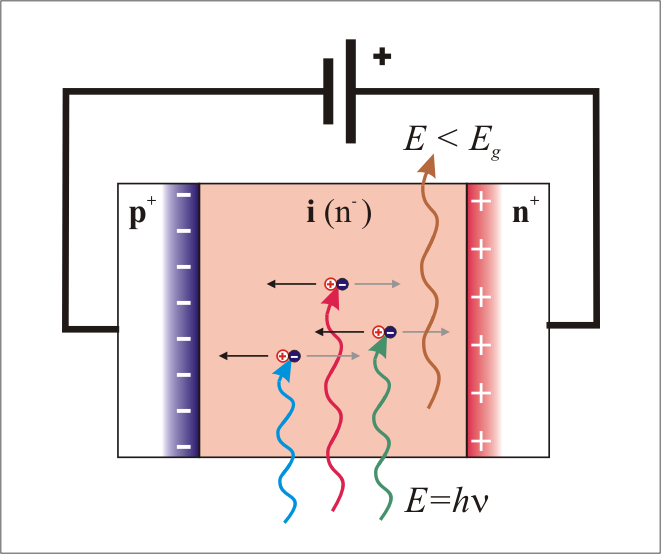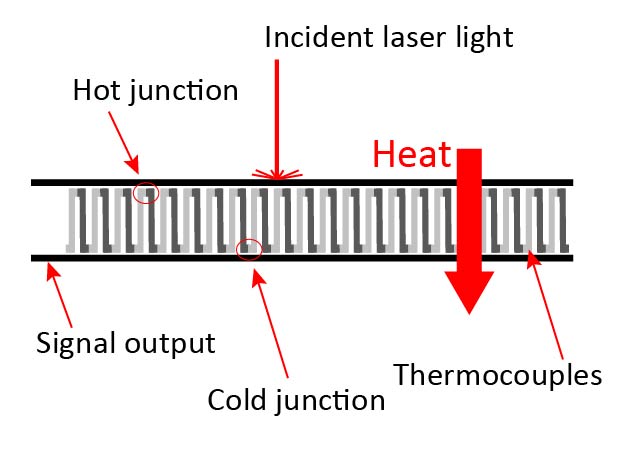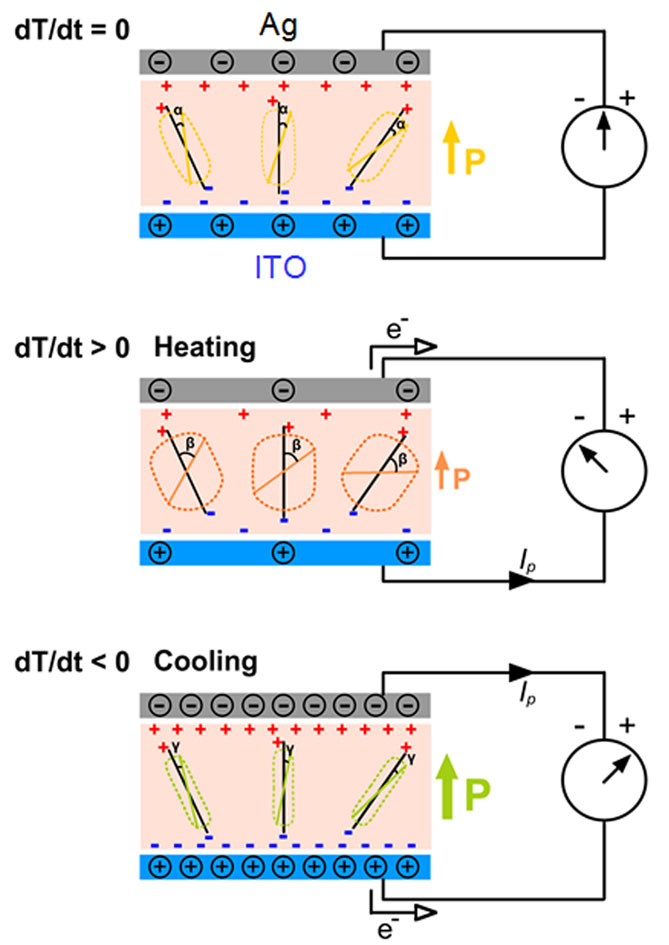For any high-sensitivity laser application, it is essential that all necessary characteristics of the laser beam in use can be quantified and characterized beforehand. To this end, we have written previously on our blog about laser beam profilers as well as the principles of photodiodes which form the basis of PIN photodiode laser detectors, but regarding power and energy detectors specifically: how do they work, and where are they typically used?
There are several major categories of laser power detectors that will be briefly covered in this article – laser photodiode detectors, thermopile power detectors, and pyroelectric power detectors, each which may be beneficial for any number of specific use cases. However, it is important to understand how each of these systems is used and typically implemented to understand how each device could be applied to a useful laser characterization system.
Laser Photodiode Detectors

A diagram of a PIN-photodiode laser detector, illustrating how absorbed light excites electrons in doped regions of a semiconducting material, creating an electric current proportional to the intensity of light absorbed (within a specific wavelength regime, dependent on the semiconducting material). Courtesy of Wikimedia Commons
The working principle of laser photodiodes can be read more extensively on our previous blog post regarding the subject, but to summarize their functionality in a nutshell: photo-diode-based detectors utilize a doped semiconducting material (typically silicon) which absorbs incident light of a given wavelength (or range of wavelengths), thereby exciting electrons and generating an electric current commensurate with the wavelength and intensity of the incident light. Laser photodiode detectors tend to have a fast response time and are less sensitive to temperature than thermal-based laser power detectors. One drawback of photodiode detectors, however, lies in their limited absorption range, which both serves to block out undesirable noise from a laser signal (for wavelengths of light lying outside the absorption range of the semiconducting material), while also requiring different detectors to properly assess lasers of different wavelengths. For detection of varying wavelengths, different semiconducting materials can be used, such as Germanium, of InGaAsP, which provide different (and complementary) spectral ranges for laser detection. Photodiode detectors are typically used for low-power lasers when compared to thermal power detectors.
Thermopile Laser Power Detectors

A diagram of a thermopile laser detector (composed of a series of thermocouples) illustrating the creation of a temperature gradient from incident laser light creating an output current commensurate in magnitude. Courtesy of Wikimedia Commons
Thermopile laser power detectors work on a wholly different principle altogether than photodiode detectors: instead of incident light exciting electrons directly, a laser beam instead is applied to a heat absorbent end of the detector, which creates a temperature gradient between the detector absorption end and the colder heat sink end of the detector. This temperature gradient then drives a voltage proportional to the magnitude of the temperature gradient, in an electronic device known as a thermopile. Thermopile power detectors are able to characterize the laser power of a typically wide range of applied lasers (in terms of both spectral range and power). However, these benefits can come at the expensive of higher sensitivity to ambient temperature conditions, as well as a slower response time and higher susceptibility to noise.
Pyroelectric Detectors

Diagram of pyroelectric material (for use in a pyroelectric laser detector) and circuit under heating, static, and cooling conditions, illustrating the creation of current when heat is applied to the pyroelectric material. Courtesy of Wikimedia Commons
Pyroelectric laser power detectors work on a similar principle to thermal power detectors, in that the outputted laser power is a function of temperature change due to an incident laser beam, but instead of arising from a spatial temperature gradient in a thermopile, pyroelectric detectors rely on voltage generated from a pyroelectric material forming the basis of the detector. A pyroelectric material is a material that, upon experiencing a temperature change, modifies the positions of atoms in its crystal lattice to produce differences in polarization, ultimately resulting in an electric current proportional to the amount of heating applied. In this sense, pyroeletric laser power sensors are similar to their thermopile counterparts in that the amount of temperature change caused by a laser beam is the determinant of the output laser power, with all of the attendant benefits mentioned previously, but typically work at lower average powers and smaller spectral ranges than thermopile power detectors. They are typically used in the mid-infrared to far-infrared spectral ranges.
Putting it all together: How to choose?
As with many other components of laser systems, each device has its benefits and drawbacks, and so serve a proper use highly dependent on the context of usage. Additionally, within each category of laser power sensor devices, there is a great deal of variance in material selection and design which affects both the efficacy of the device as well as their specific use-cases. Indeed, for many all-purpose solutions, several varieties of detectors may be combined alongside other laser system components for general purpose laser power detection.
FindLight hosts a diverse marketplace of all the aforementioned laser detection devices, including PIN photodiode detectors, thermal sensors, power detectors, and energy sensors. You can also find a great introductory video here about high-power laser power meters. With the above knowledge in hand, it will hopefully be easier to make an informed decision about the most useful device for your laser system.
